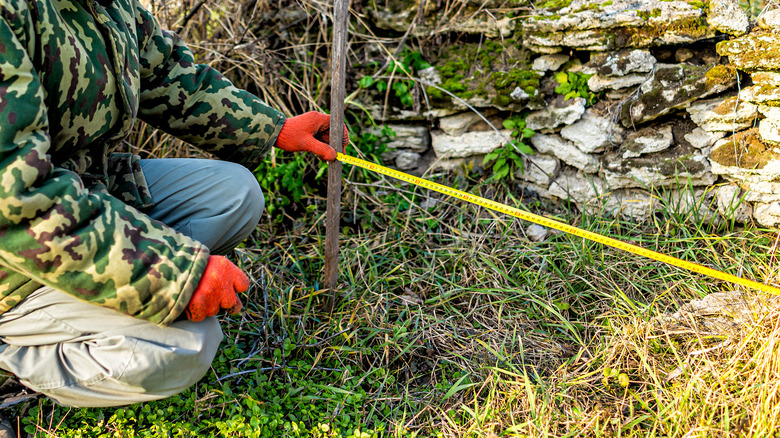For a gardener, few experiences in life are more exhilarating than the sight of a flourishing vegetable garden, the taste of a homegrown tomato, and the intoxicating scent of freshly laid mulch. Mulching the garden is a labor-intensive task that should be done about once per year to help the soil retain moisture and resist weeds, but remembering how much mulch to buy can be even harder than the physical work. As you’re wrestling with the tape measure and crunching numbers in your head, calculating how many bags of mulch you need can feel less like gardening and more like a college algebra test. Luckily, we’ve got the “cheat sheet” you need to make mulching simple. In short, you’ll need about one bag of mulch for every 12 square feet of garden space.
Of course, that’s assuming you have a garden that’s easy to measure and you’re only applying a thin layer of mulch. The exact number of mulch bags you need will vary based on your garden size, shape, and ideal mulch depth. Here’s how to measure your garden bed, figure up a more exact number, and save money by ensuring every square inch of mulch is put to good use.
Measure and calculate

Start by measuring the length and width of your garden bed, then multiply these numbers together to get the area. If you have a circular or rounded garden bed, apply the formula A=(3.14)r^2 to find the area. For unusual garden shapes, do your best to measure and estimate, rounding up to ensure you’ll have enough mulch to cover the bed. Ideally, mulch should be about 2-4 inches deep. If gardening mulch is too thick, it can prevent water from seeping into the soil and reaching your plants’ roots. However, if it’s too thin, it’ll look messy, wash away with rain, struggle to retain moisture, and allow weeds to crop up in your garden.
Bags of mulch are usually sold in terms of cubic feet, with a standard size being 2 cubic feet per bag. This means you could fill two 12-by-12-inch cubes with one bag of mulch, or cover 24 square feet with one inch of mulch. At the minimum recommended depth of 2 inches, a standard bag of mulch will cover about 12 square feet of garden space. Take your garden area measurement and divide it by 12 to determine how many bags of mulch you need at a minimum. For example, a 10-foot-by-20-foot garden bed has an area of 200 square feet. Divide 200 by 12, and you’ll get 16.67, meaning you need to buy 17 bags to cover your garden bed with 2 inches of mulch.
Get the most out of your mulch
A bag of mulch may only cost around $3 to $7, but it’s easy to see how that cost adds up. Some people may be tempted to cut corners or lay mulch too thin, but knowing how to spread mulch effectively is a better way to save money and get the most out of your investment. Start your mulching project by cleaning out the garden beds and removing old mulch, leaves, sticks, and weeds. Next, carve out the edges of your bed to create a distinct border between the grass and the area you want to mulch. Give your bare soil a good soak before applying mulch to ensure your plants are well-hydrated, as fresh mulch can make it harder for water to reach the soil.
With a rake, hoe, or shovel, spread the mulch evenly around your garden, measuring for a depth of 2-4 inches. In tight corners and under plants and shrubs, use gloved hands to spread the mulch as far back as possible. However, be careful when spreading mulch around trees; the dreaded “mulch volcano” is a surefire way to block oxygen flow and trap moisture around the trunk, causing root rot and other issues. Instead, make a donut shape around trees to ensure the trunk stays dry. When finished, water down the mulch once more to help it settle in.